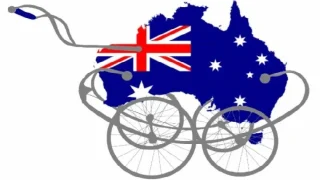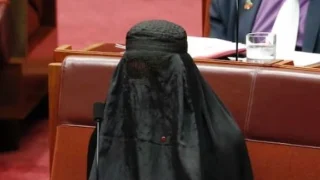
Prime Minister Kevin Rudd’s pledge to ‘Close the Gap’ between Indigenous and non-Indigenous health outcomes was perceived as a long overdue landmark, but its achievement will require more than yet another government strategy or more funding. The Rudd government is doing what previous administrations have always done—throwing more and more money at the problem. But this is not the solution. Improvements in Indigenous health outcomes will only occur once the lack of accountability that has plagued the Aboriginal health sector ends.
Over the past 12 years, funding for Indigenous health programs has increased by 328%—from $115 million in 1995–96 to $492 million in 2007–08, with no appreciable improvements in health outcomes. The latest budget shows that the Commonwealth government is now spending 50% more on Indigenous health than it was in 2007–08.1 Yet, recent health reports, A Healthier Future for all Australians and Building a 21st Century Primary Health Care System, continue to recommend increasing expenditure on Indigenous health, even though no one is really sure of the level of unmet need.
A battle has been played out between government and Aboriginal Community Controlled Health Services (ACCHS) for control of Indigenous health funding—with the government wanting increased control of where funding is going by channelling it into more and more Indigenous health programs, and ACCHS arguing that they deserve more funding as they provide ‘culturally appropriate care.’ What has been lost sight of in this fight are the people most in need of additional health funding—those Aborigines and Torres Strait Islanders living in remote communities where health services are few and far between. Most ACCHS are not in remote or very remote areas, while most Indigenous health programs are implemented without any consultation with communities or assessment of need.
Diversity in health services is not a problem—but the consequences of a lack of leadership and accountability are. The combination of different layers of government bureaucracy and the mixture of public, private and Aboriginal medical services results in duplication in some areas and service gaps in others. There are numerous programs for every foreseeable health issue, but most are provided simply because someone thinks they are a good idea or because funding can be secured from one or another of the federal or state government departments and not because of any evidence based policy.
The untargeted nature of government spending on health means it is difficult to know what services the money is buying and for whom. Without knowing this, it is not clear whether the problem is that Aboriginal health providers do not have enough straw to make bricks or whether the straw they have is being wasted.
Different departments may know where funding for individual programs is going, but information on all the funding provided by Commonwealth and state and territory governments to Indigenous health providers is difficult to find. Complex funding arrangements have resulted in separate ‘buckets’ of funding for different programs, with one Aboriginal health service receiving 42 different ‘buckets’ of money, all requiring separate applications and reporting.
Funding complexities make proper financial accountability next to impossible. Fewer than half of the Aboriginal health services file annual reports or complete their financial reporting requirements. They face few consequences for not filing reports, but the repercussions of this apathy have resulted in financial mismanagement, insolvency and even fraud.
There needs to be better management of overall funding and a strategy to coordinate how programs are delivered. One way of achieving this may be the National Health and Hospitals Reform Commission’s (NHHRC) recommendation of a National Aboriginal and Torres Strait Islander Health Authority (NATSIHA) to pool disparate funding streams. But greater transparency about the cost of delivering health care to Indigenous communities cannot be achieved without accurate reporting showing how patient outcomes are related to the cost and quality of services. Current funding arrangements for Indigenous health programs and Aboriginal health services reward the provider and not the patient. Funding models designed to address patients’ needs first are preferable to models that allocate a pool of funding for providers to dispense as they see fit. In this regard, it may be time to revisit the idea of coordinated care. Although there were some critiques of the coordinated care model—it was at least based on matching health services with patients needs. By separating the purchasing of health services from the delivery of health services, and tracing how funds were spent electronically, the coordinated care model also ensured that both the coordinators and (Aboriginal) medical service providers were kept accountable.
Sara Hudson is a Policy Analyst in the Indigenous Affairs Research Program at the Centre for Independent Studies. Prior to joining the CIS, Sara worked as a policy adviser for the NZ Department of Labour, and in the Evaluation Unit of NZ Police. She has a Bachelor of Arts with first-class honours in criminology and anthropology from Victoria University, Wellington.











